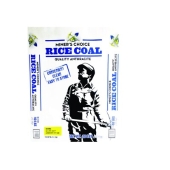







Ellendra Nauriel wrote:A. Did anyone else cringe at the sight of him handling wet ashes with his bare hands? I've known people who lost all the skin off their hands that way.
B. At one point it looks like he's mixing something else in with the ashes. Something that's almost the same color, but with a slight beige tinge. Was that clay maybe? Because that would make a lot more sense. Ash and clay would react to form something akin to concrete. I think there's another thread about that here somewhere.
C. It looks like the pond he soaked the items in is slightly acidic. That probably did a lot to neutralize any unreacted ash. You could probably get a similar effect soaking it in very diluted vinegar or black tea. I have no idea what soaking his items did to the pond life.


Vanessa Alarcon wrote:
Hi Buster! Thanks for all the info. I agree that I might be throwing everything and the kitchen sink when activating the coal but in my defense 1) I’m starting these beds on a surface of white sugar sand with maybe a millimeter of soil covering it. And the weather here means baking sun and torrential monsoon (exaggerating but not by much) that just leach everything out of the soil. And most importantly 2) I’m Latina and that’s just how we cook 🤪🙃🤣
But in all seriousness,( i am going to experiment with the clay, however) do you think there’s a chance of me causing harm or burning the plants? I’ve seen some you tube videos of people with hukel beds in my zone 9A and they have done pretty well, I don’t expect great results from the start and I know everything will reduce. And I will be specially careful to put a good thick layer of top soil and maybe amend with a bit of clay too if Ms. Sutton shares her brand with me
I’m going to use 1 bed for annual greens, bed 2 for mostly tomatoes and peppers and bed 3 for herbs and edible perennials .
Oh and most importantly! Could you please share the name brand of the clean briquettes that you used?
Thanks a million! 🙏
